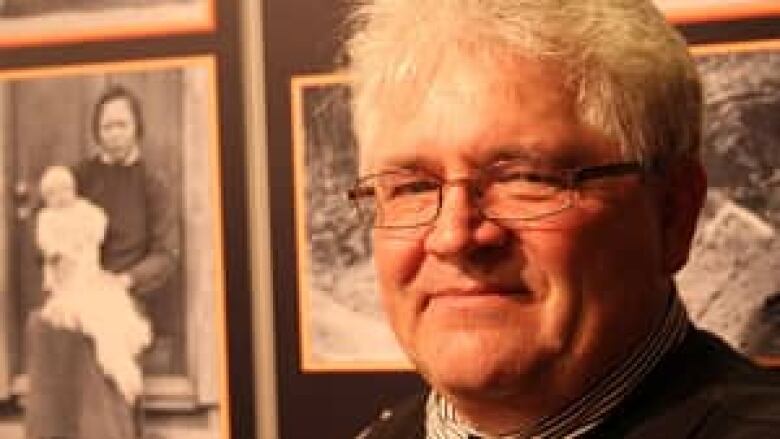Canada's golden immigrants from China remembered
Chinese immigrants flocked to British Columbia during late 19th-century gold rush
The golden history that links British Columbia and China is on display through a new exhibit of photographs that opened in Hong Kong this week.
Titled Who Am I? Bridging the Pacific from Guangdong to Barkerville and Back, the collection of portraits and snapshots showcases the Chinese immigrants who left home in the late 19th century, arrived on Canada's shores and helped settle communities such as Barkerville in the foothills of the Cariboo Mountains.
They were gold rush explorers, just like thousands of others who flocked to the Fraser River, and they left an indelible mark on Barkerville and other historic towns in the province.

"While most of us know that the Chinese played a part in the early gold rush, I don't think very many British Columbians or Chinese realize the scale and the scope of their contributions," John Massier, chair of the Barkerville Heritage Trust, said at the exhibit's opening at the Hong Kong Museum of History. "We put together this exhibition to honour their memory."
Some of the immigrants worked as labourers in the mines, some opened general stores and other businesses, others took up their own mining claims, and they all helped make Barkerville a golden town, Massier said.
Hopes that mystery faces will be ID'd
His volunteer organization has a huge collection of artifacts from the gold rush era including more than 1,000 photos. The exhibit features many of them on panels thatinclude text telling the stories of some of the Chinese families from Barkerville. There isalso an interactive component: two iPads are loaded with hundreds of photos and viewers can leave comments. The curators are hoping viewers will be able to identify some of the people in the photos or just share their thoughts on what they see.
The exhibit was first staged at Vancouver's Sun Yat Sen Garden and after it leaves Hong Kong it will go to the Guandong Overseas Chinese Museum in Guangzhou, then on to three, or possibly four, other cities in south China.
CBC in Hong Kong
Meagan Fitzpatrick has been posted to Hong Kong to bolster CBC's coverage of a dynamic region of the world. Hong Kong is known as an international financial centre, but there is much more to it than that, and it has close connections to Canada. The city of seven million hosts nearly 300,000 Canadians, and about 500,000 people of Hong Kong descent make their home in Canada. Meagan is a senior online writer who covers national news and federal politics in CBC's Ottawa bureau. Follow her on Twitter: @fitzpatrick_m
The Chinese immigrants not onlyhelped build communities in Canada, but also ones in their homeland, thanks to the money they earned and sent back. "The fruits of their labours helped build up a series of villages in southeast China in Guangdong province. So the families there still remember their family members that went to North America and sent this money home," Massier explained.
The historic economic relationship between China and British Columbia is one the provincial government iskeen to build on. It opened a new trade and investment office in Hong Kong in January and its managing director was at the exhibit opening Tuesday. Brian Brown read a congratulatory letter from Premier Christy Clark, and he also talked about how B.C. could be a major supplier of liquefied natural gas for Asia.
The historic racism that Chinese migrants experienced when they settled in Canada did not go unmentioned at Tuesday's event and an image of an immigration document from 1903 declaring that the requiredhead taxhad been paid is part of the exhibit. An estimated 81,000 Chinese immigrants paid the fee between 1885 and 1923, raising millions of dollars for the government.

Massier said that even though Chinese were segregated in Barkerville in the gold rush era, strong bonds were formed between all residents in the town, which also included many aboriginal Canadians.
"I think there was a lot more friendship among these people than there was in a lot of places because of the remoteness and the hard work they did," he said. "I think you can really see it in the photographs."
Massier, who admitted he was feeling some culture shock during his few days in Hong Kong because of its size and population density compared to Barkerville, could barely contain his excitement about the exhibit.
"This is thrilling for me, as a local resident, to get this out here and to share it with people across the ocean. I think its a feather in the cap of British Columbia and Canada, and Barkerville," he said.












_(720p).jpg)


 OFFICIAL HD MUSIC VIDEO.jpg)
.jpg)



























































































